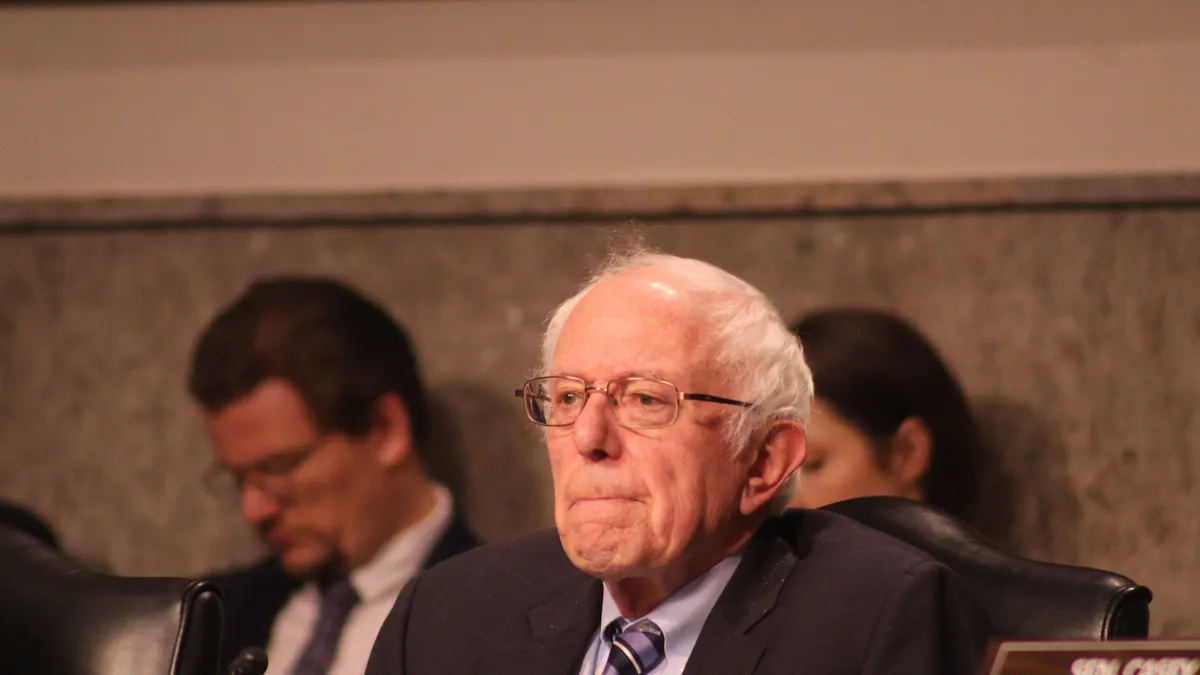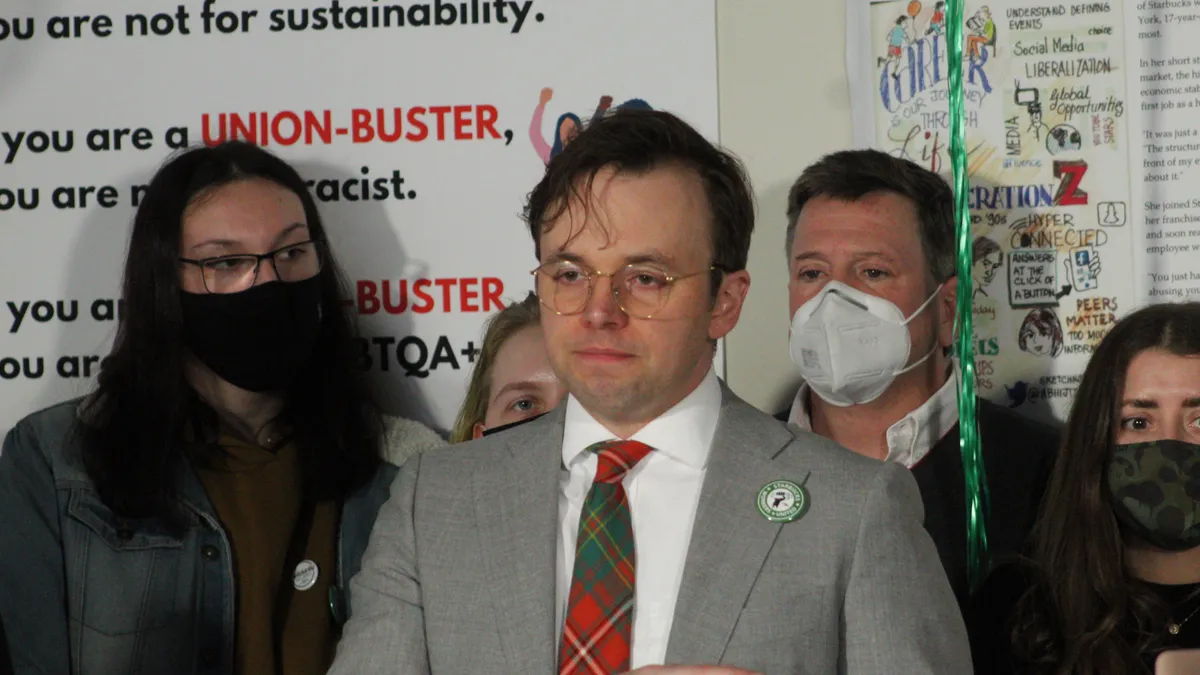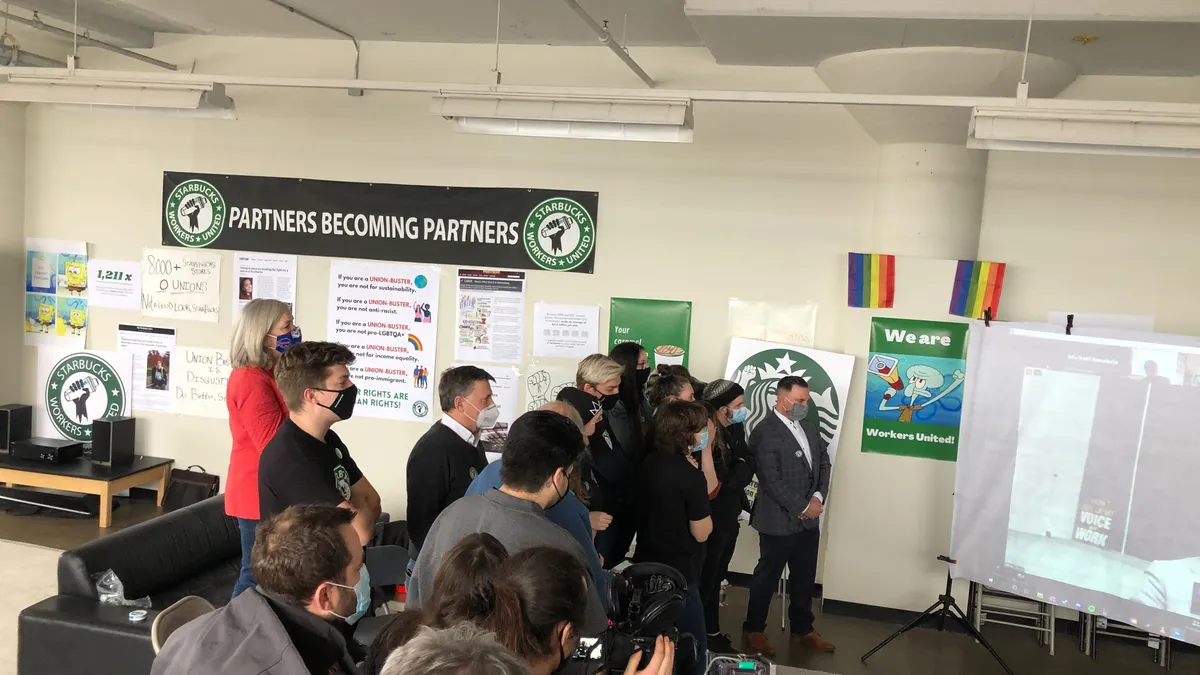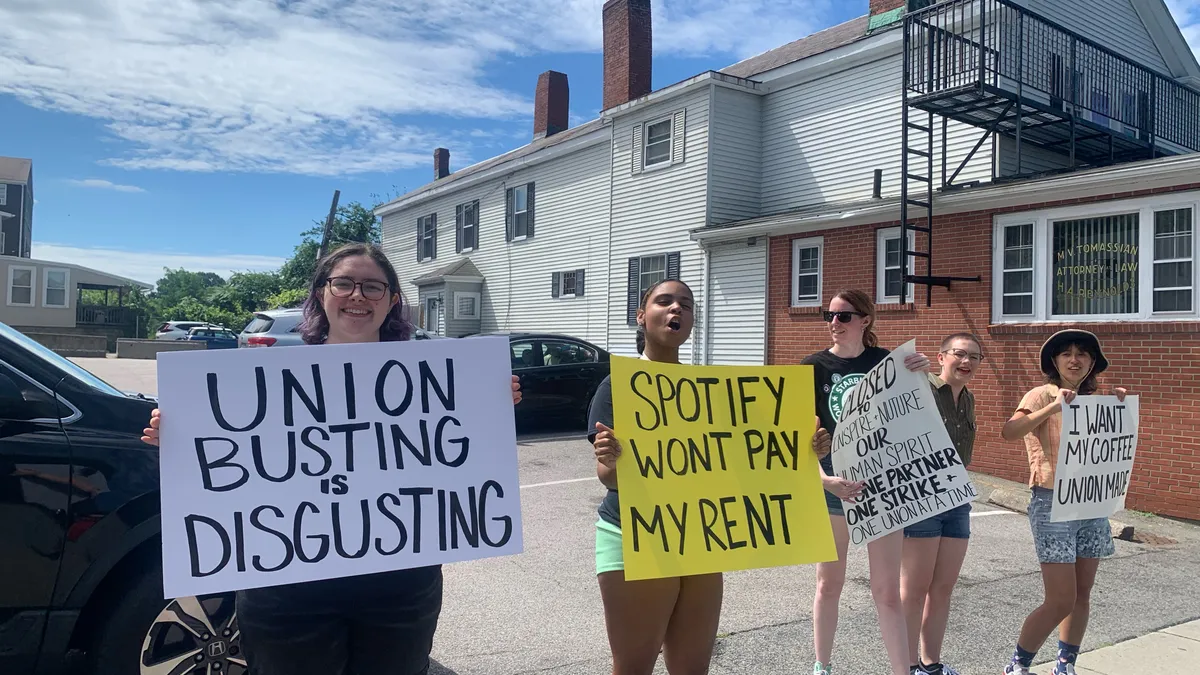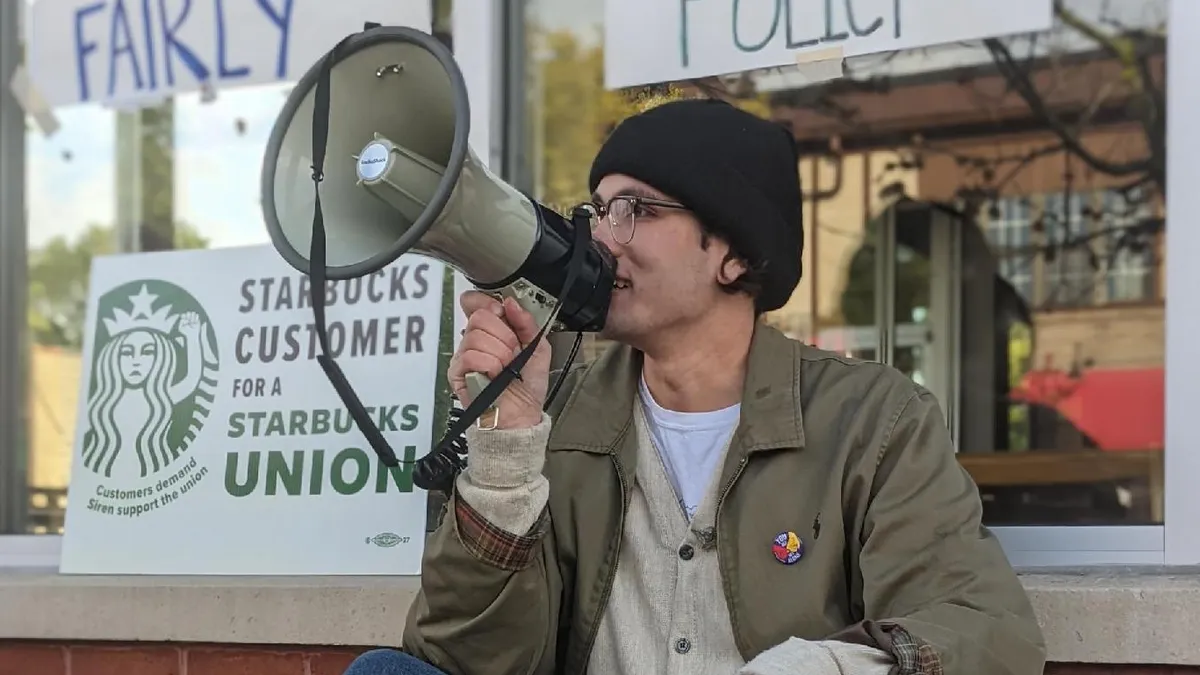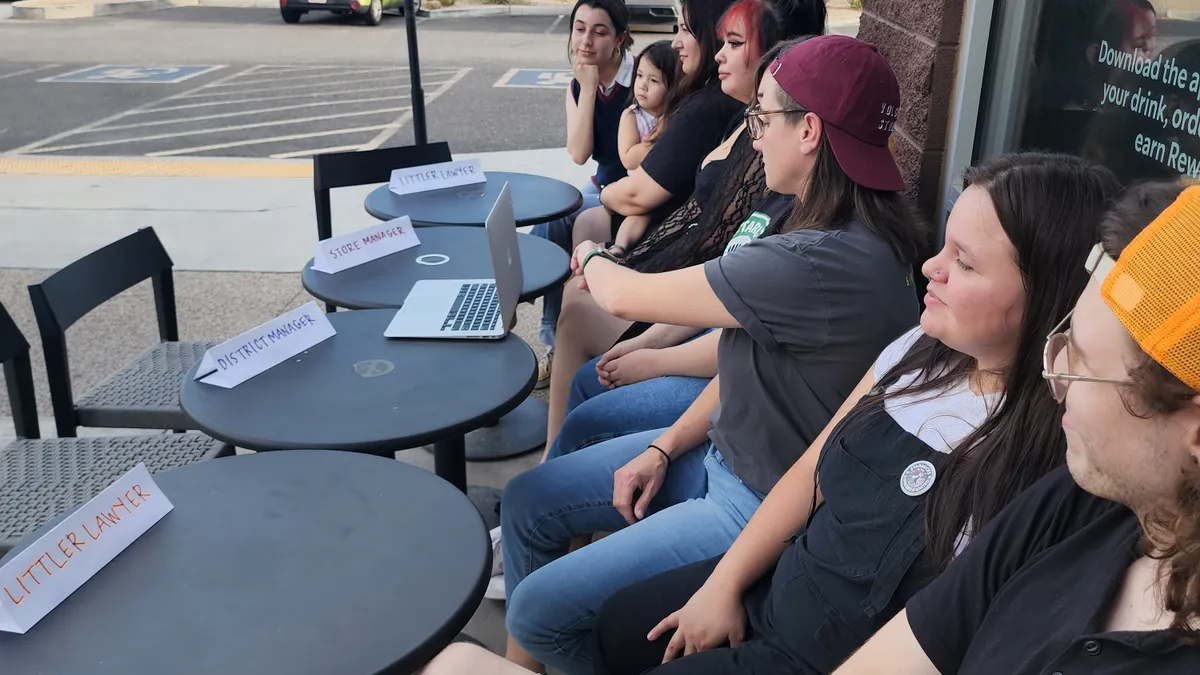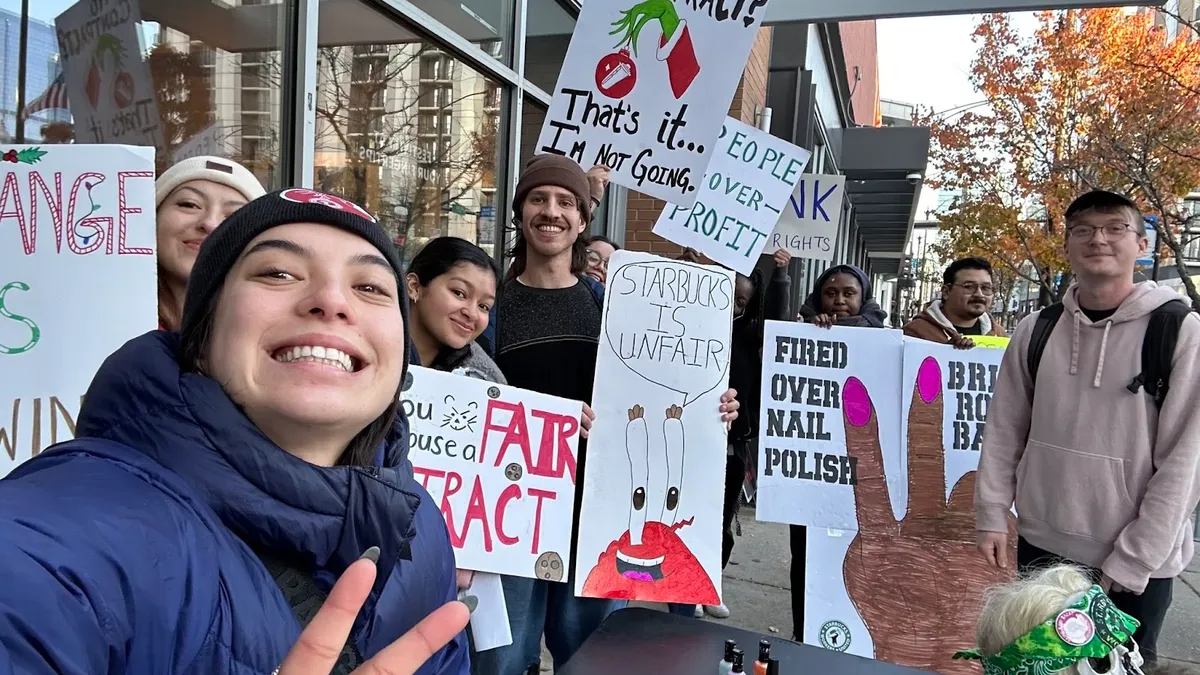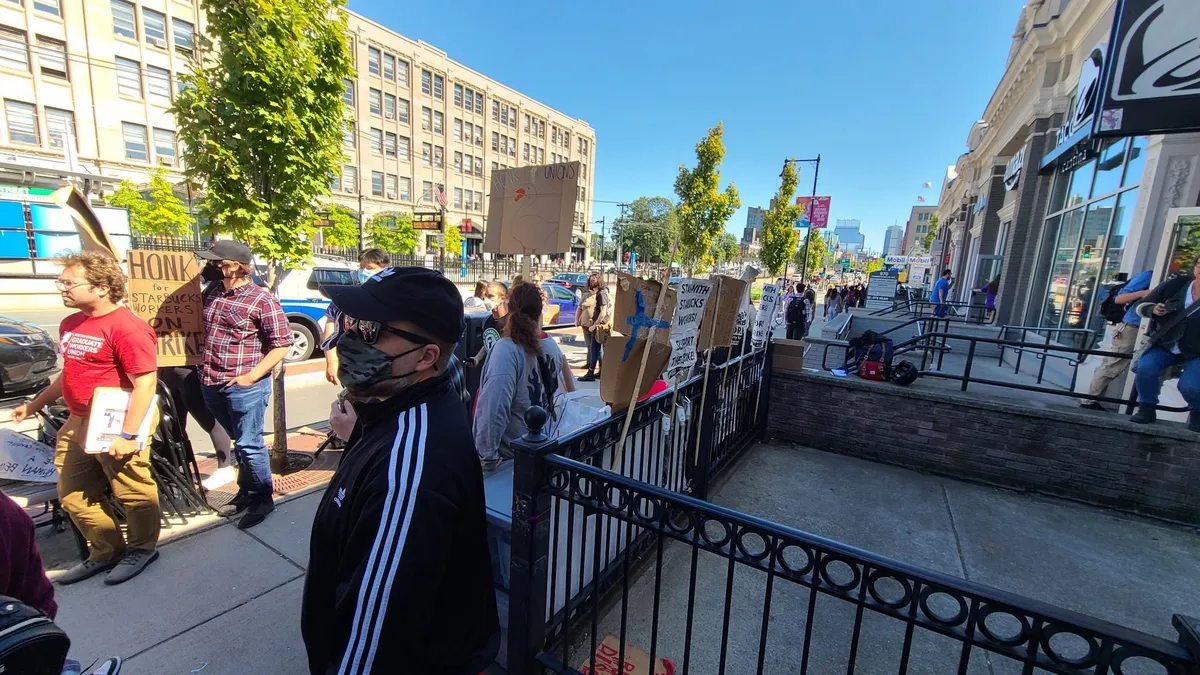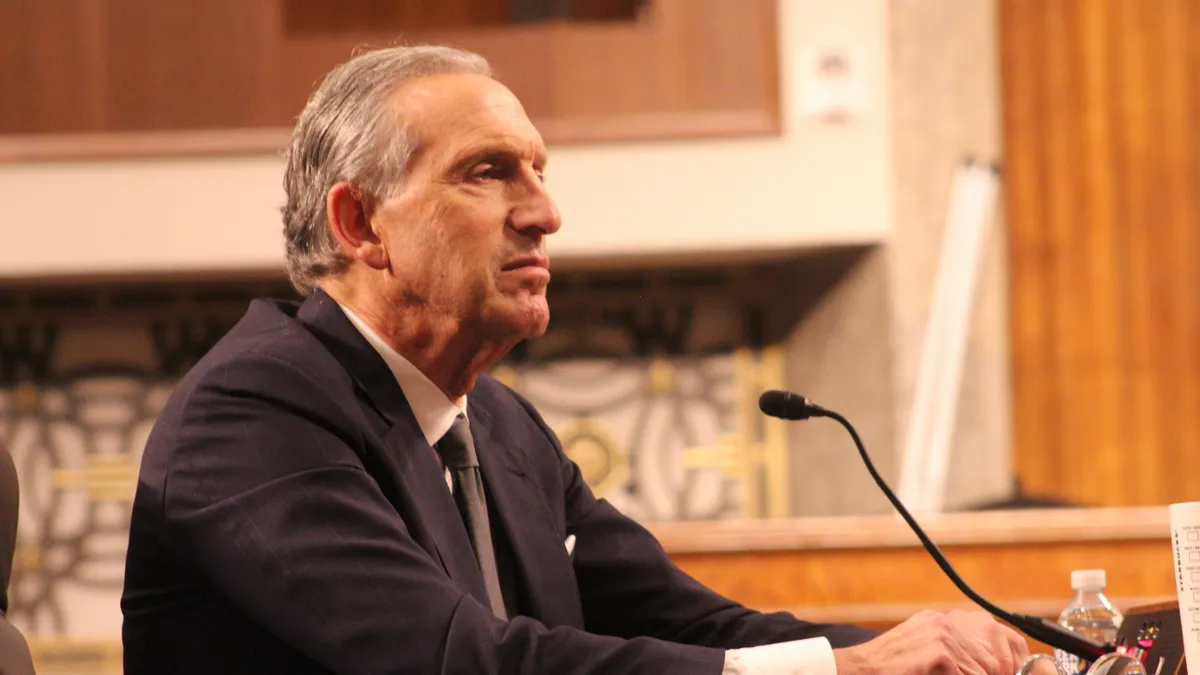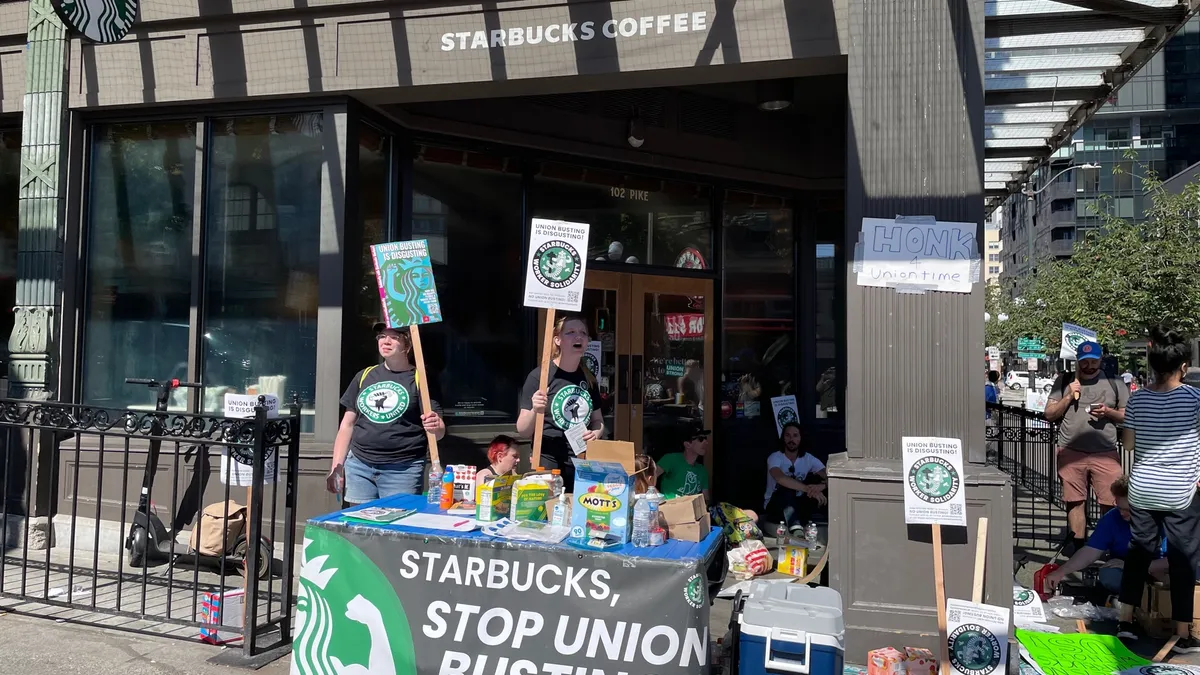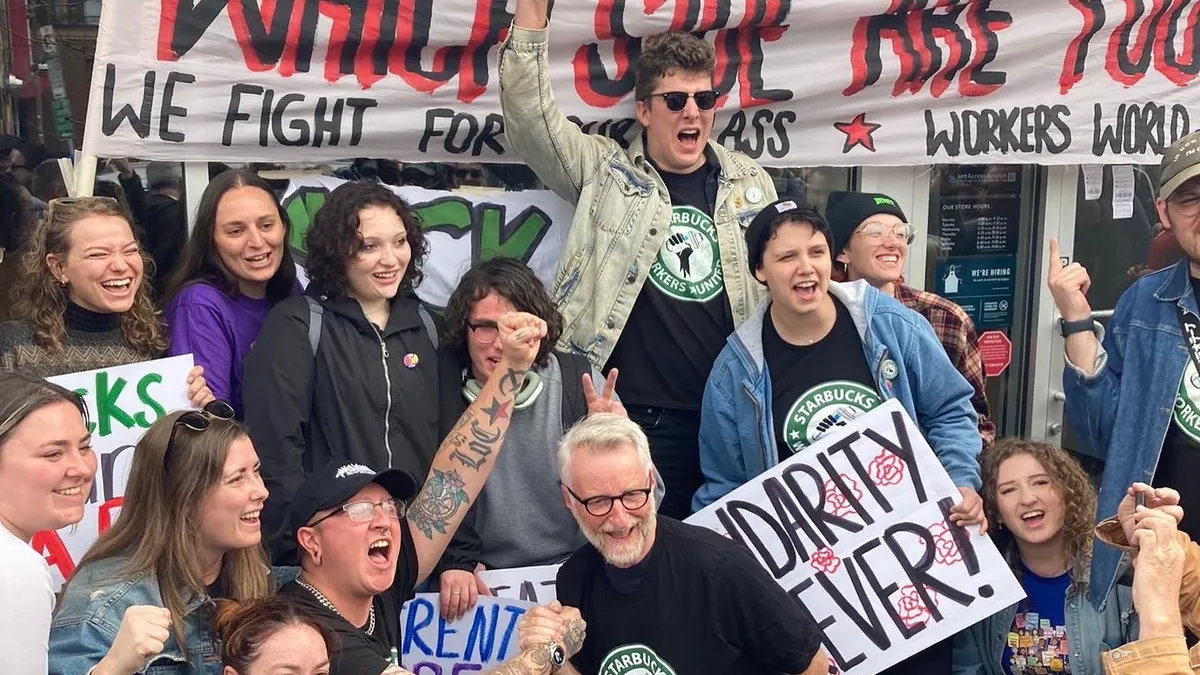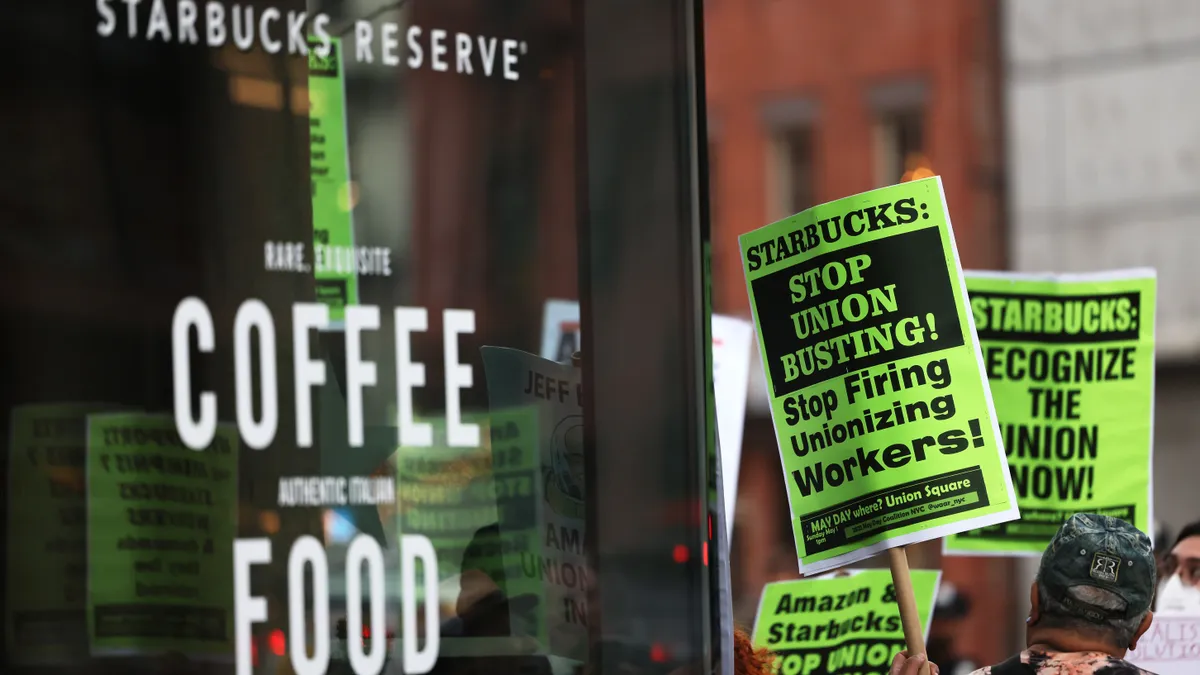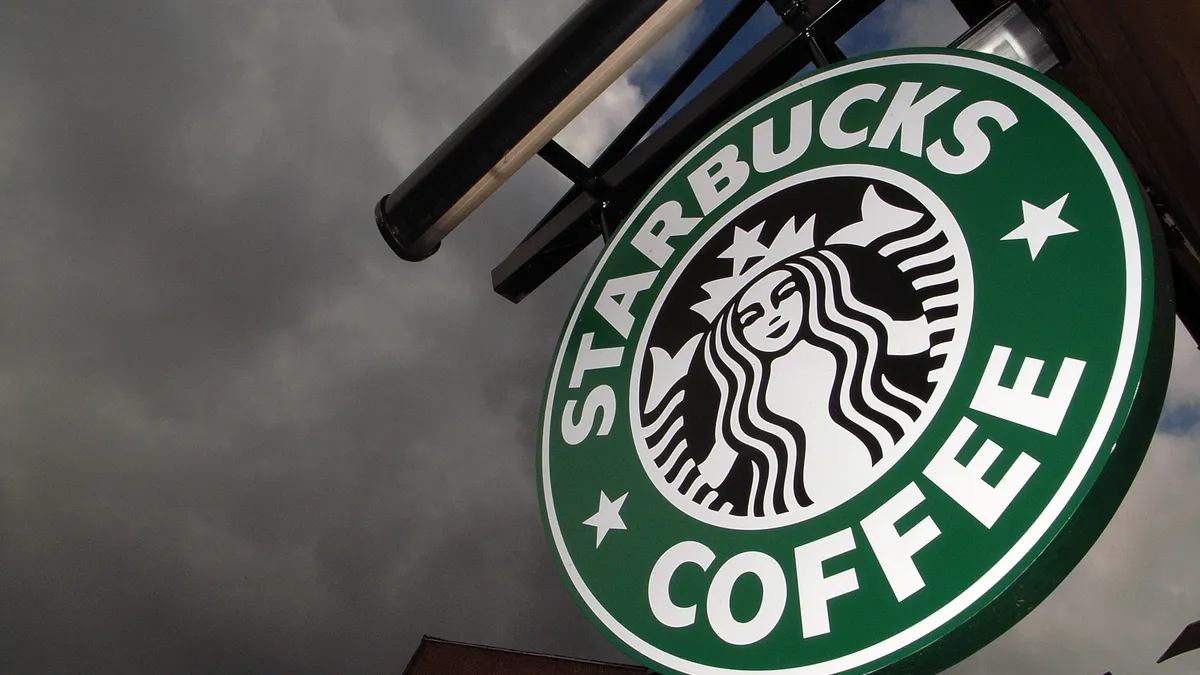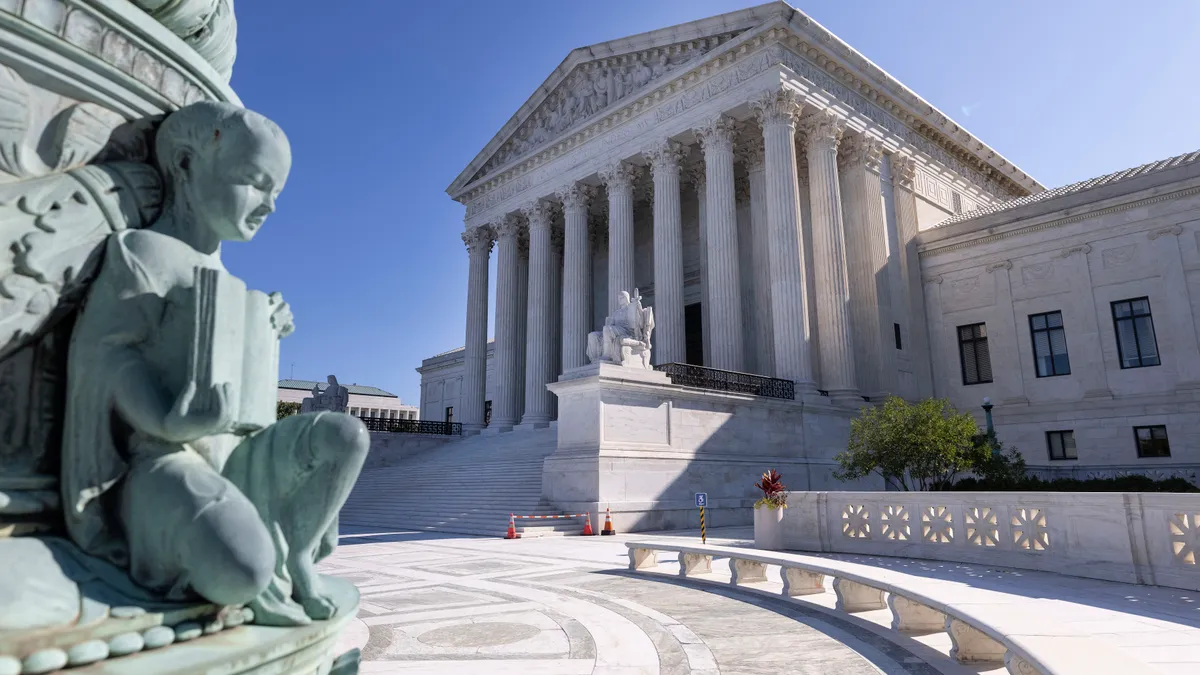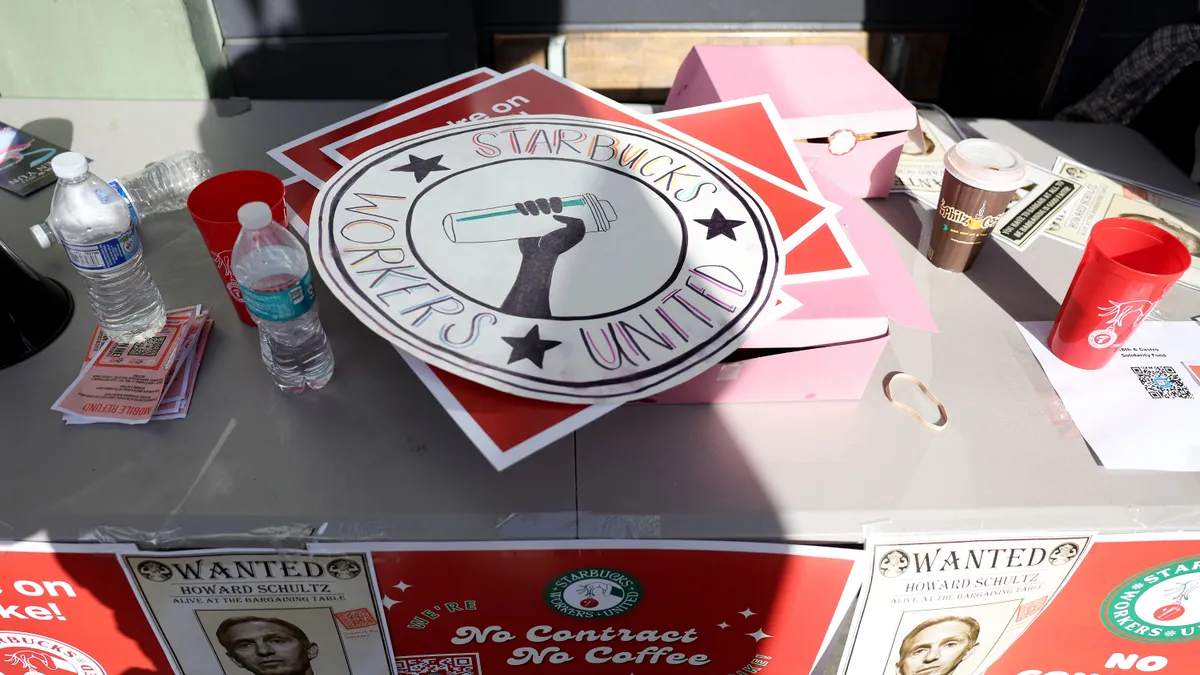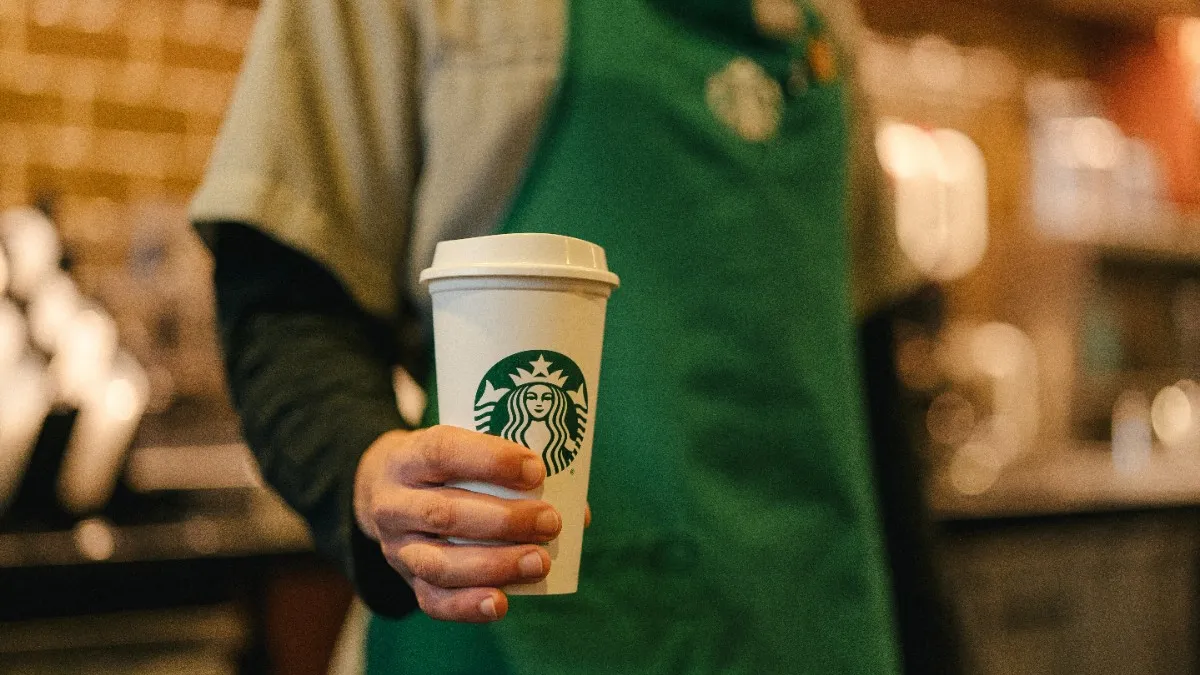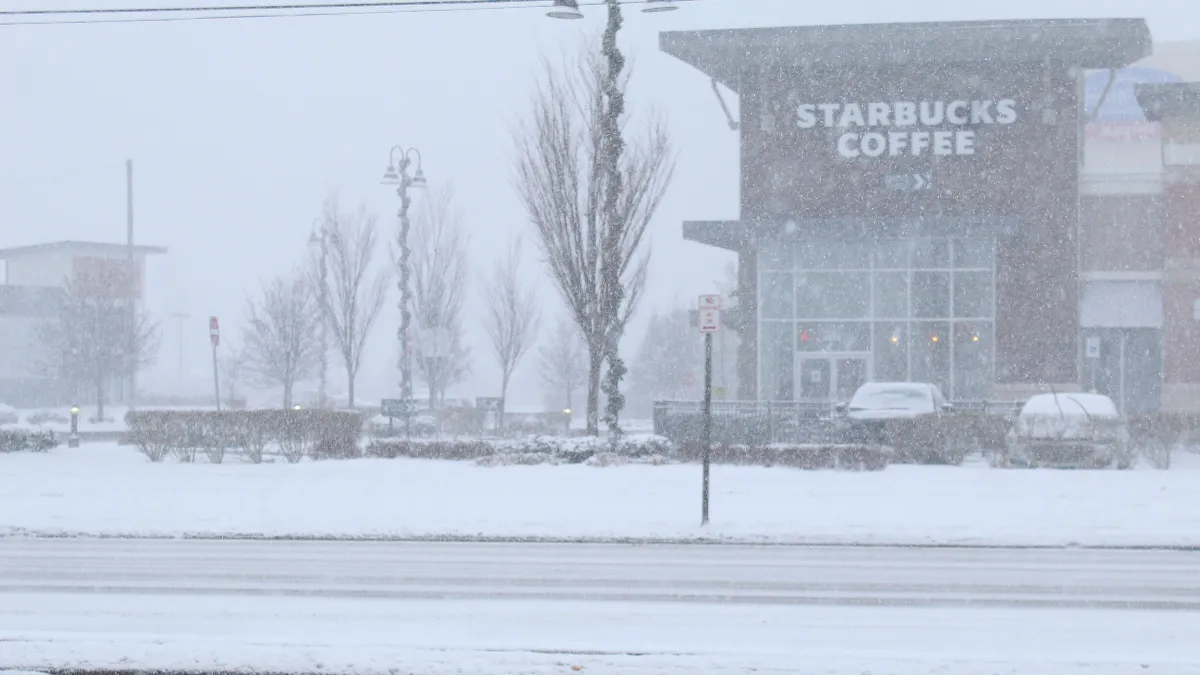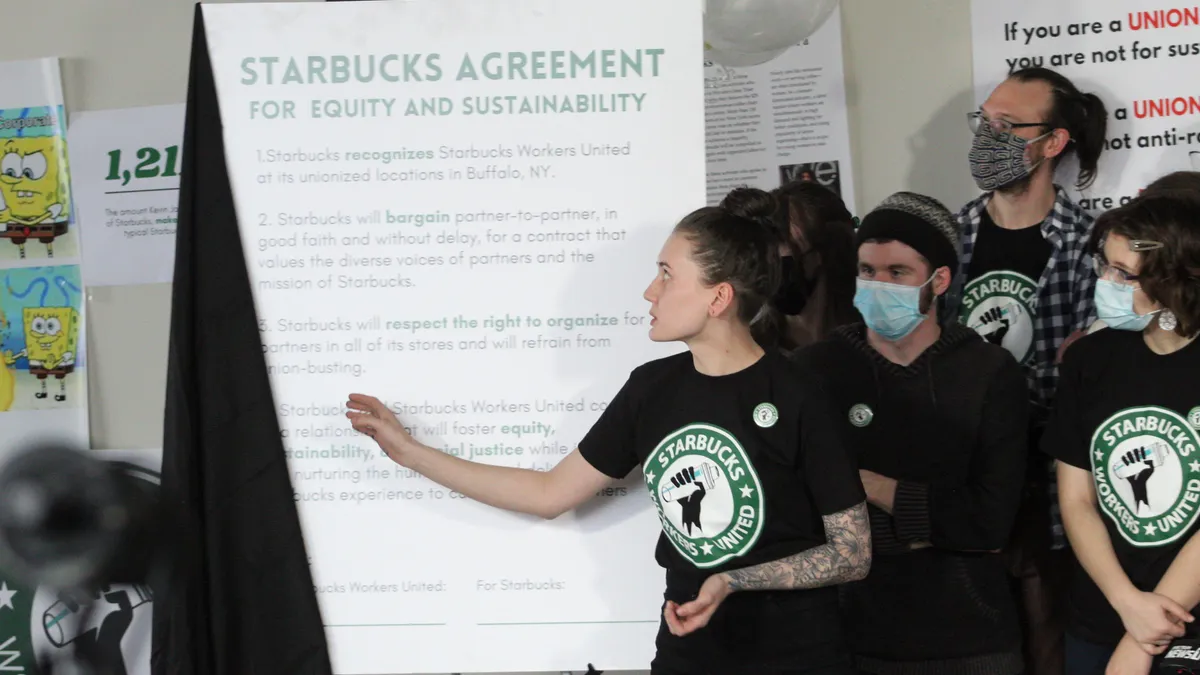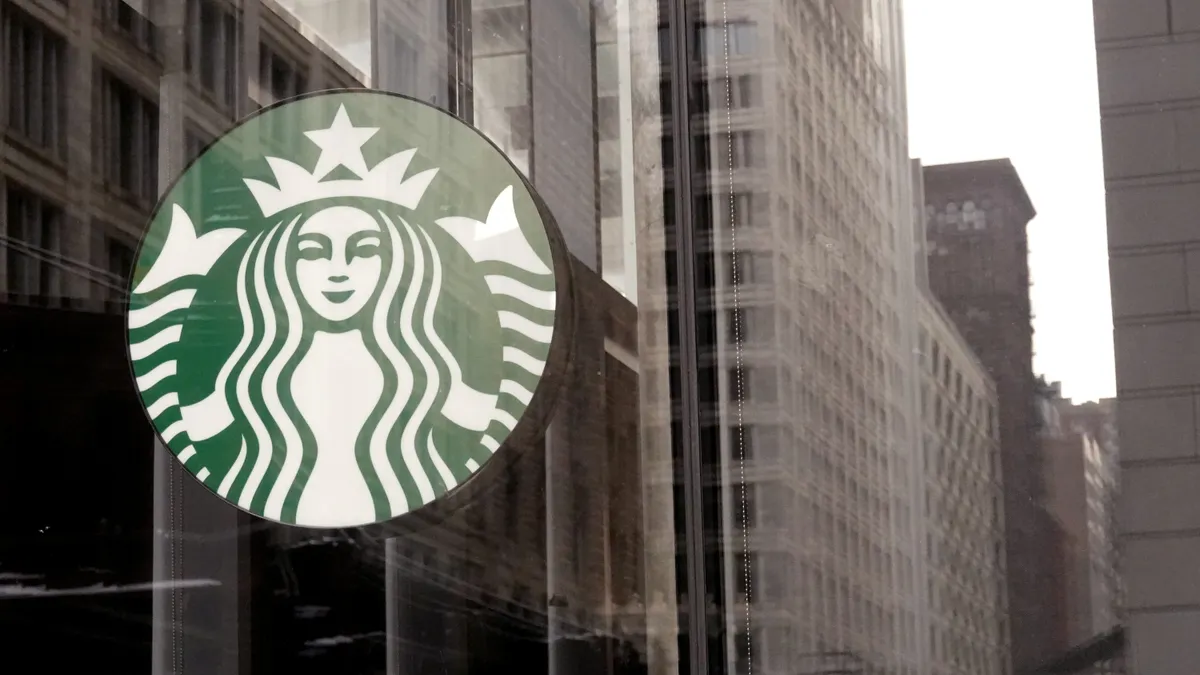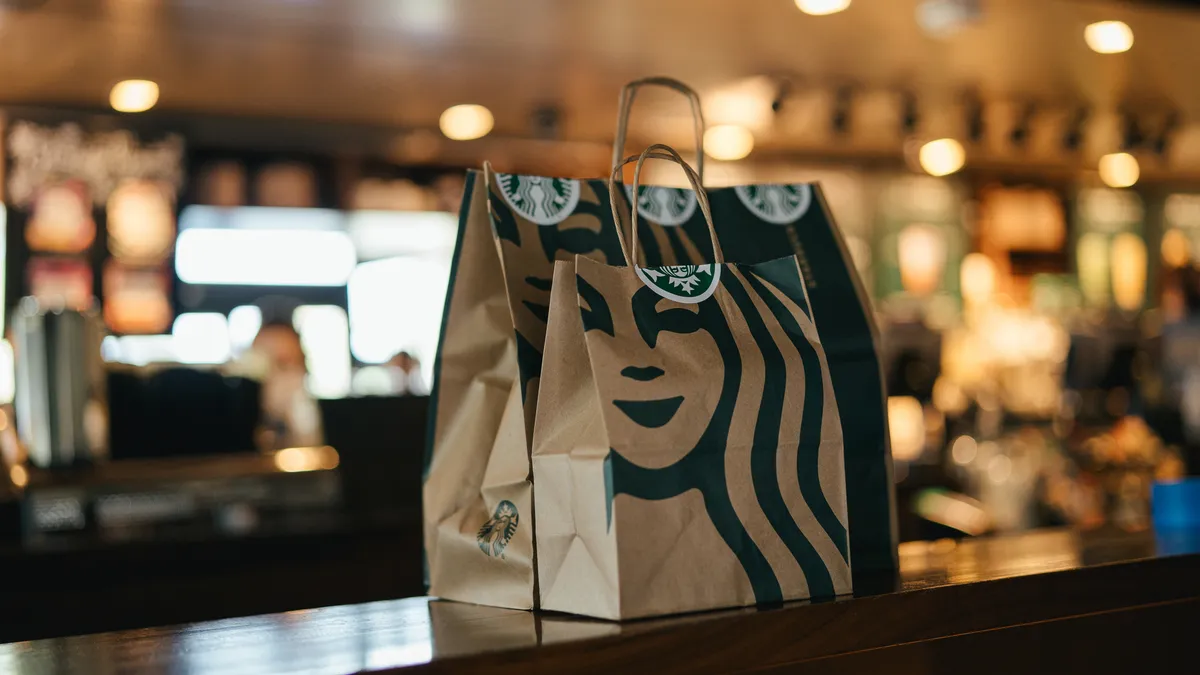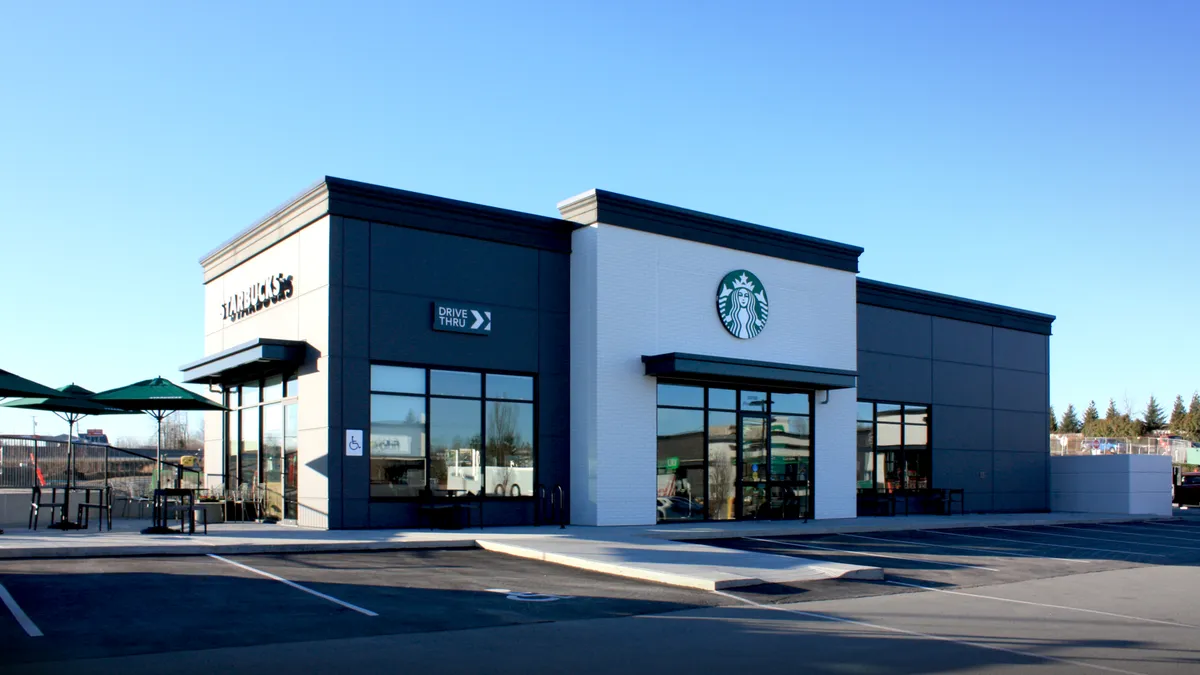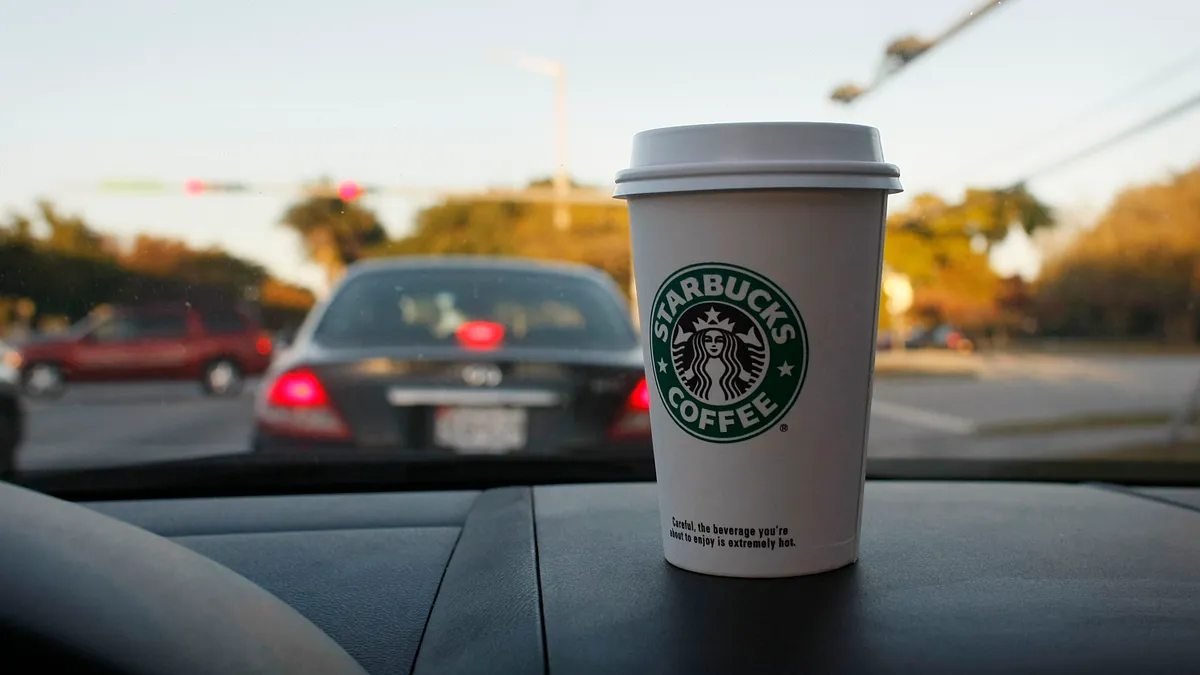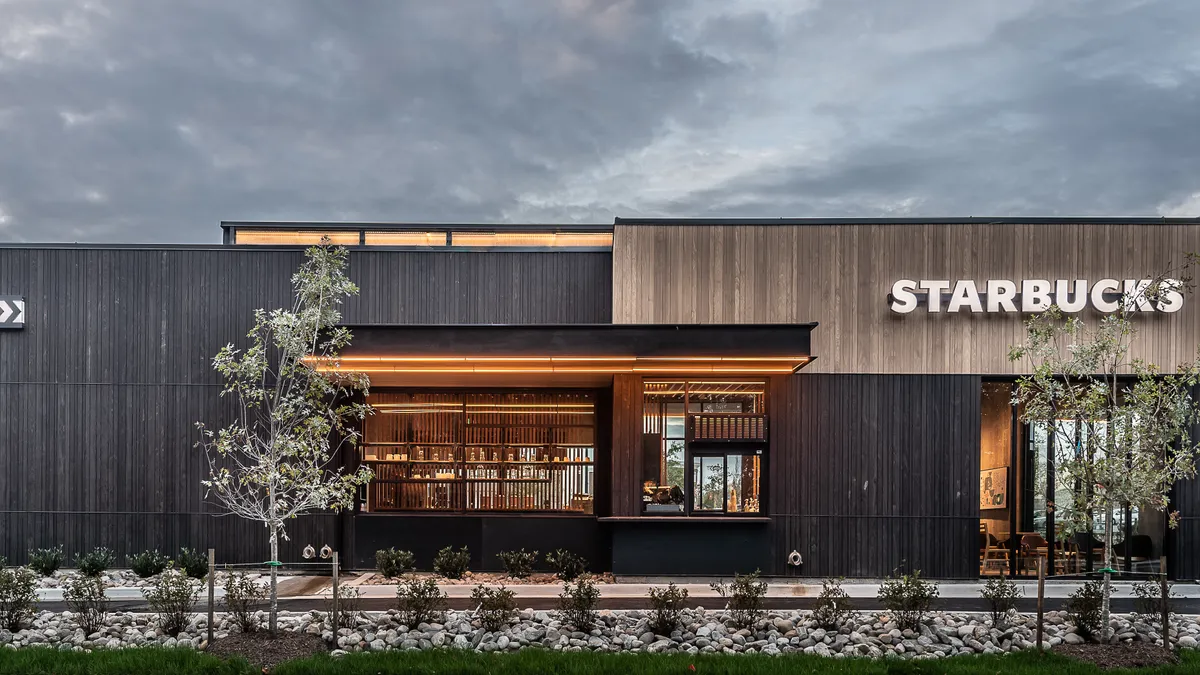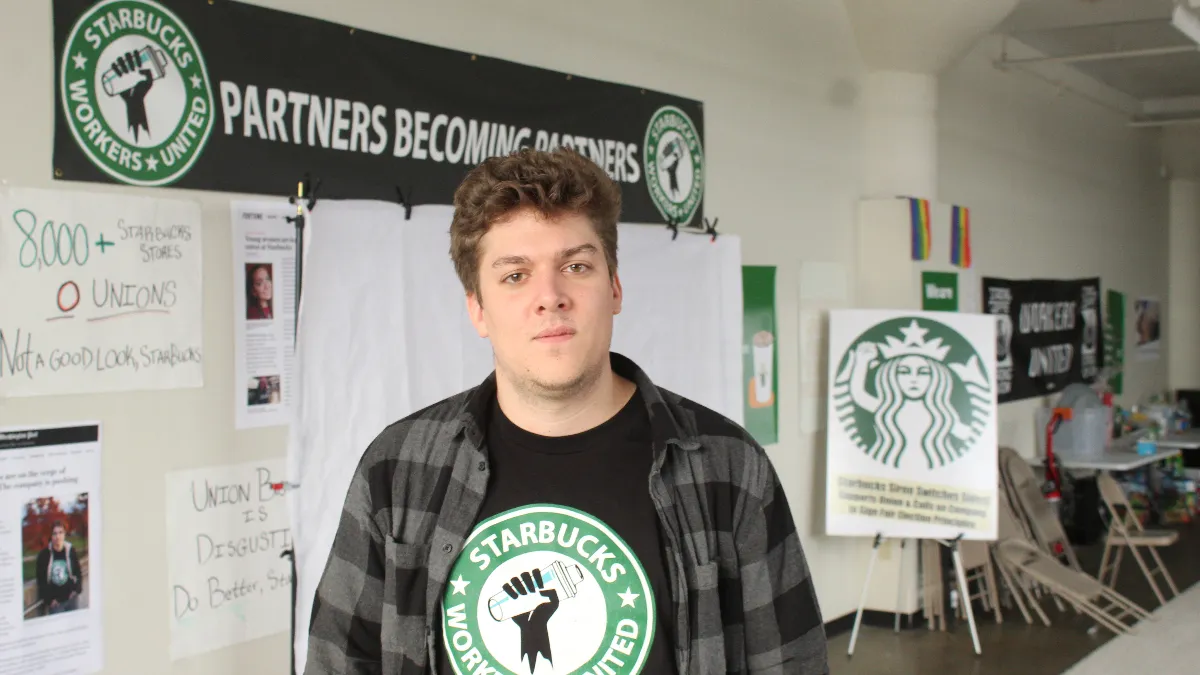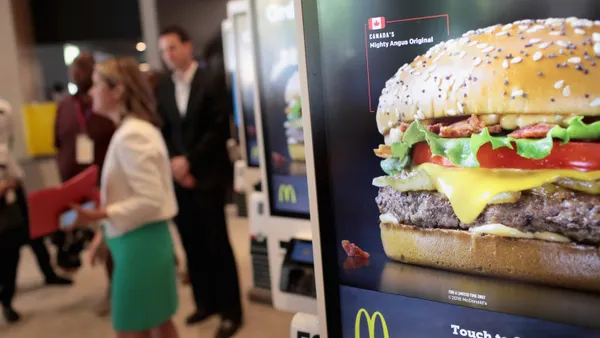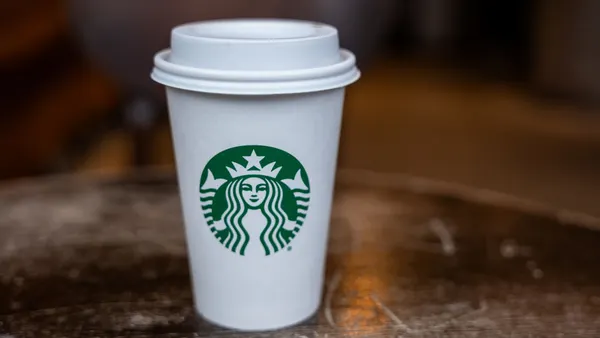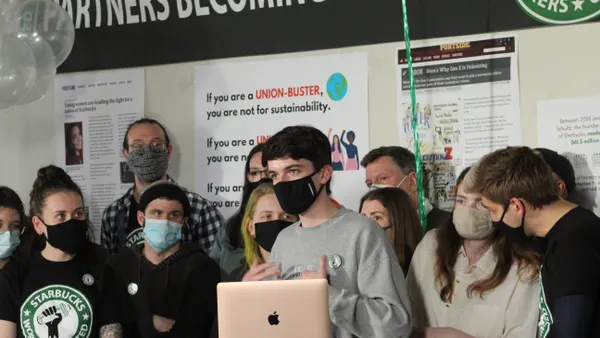While most of former CEO Howard Schultz’s testimony Wednesday amounted to a repetition of the Starbucks’ public denials that it engaged in union busting, Schultz’s hours-long appearance before the Senate Health, Education, Labor and Pensions committee did reveal important facets of the ongoing struggle.
Schultz's testimony may indicate the company's strategy is working
Schultz told the committee “employee retention at Starbucks is twice the industry average.” But at union stores, Schultz said, the rate of attrition was higher than at non-union stores.
“Overall in the stores that have voted for the union — about 300 stores — there’s twice the level of attrition that we currently have in the [majority] of stores that have not voted for unions,” Schultz said. He claimed that this turnover was due to employees deciding they did not want to work with the union.
Increasing turnover, labor experts have told Restaurant Dive, may be part of the company’s strategy.
“There's no doubt that Starbucks has been trying to drive out pro-union workers throughout the country by firing them … reducing their hours, and enforcing new availability policies in a draconian way,” John Logan, chair of the department of labor studies for the Lam Family College of Business at San Francisco State University said in an email to Restaurant Dive.
Logan referred to the company being ordered to reinstate 22 workers and additional 150 union claims that workers have been fired for union activities.
Starbucks Workers United said they haven’t seen any concrete evidence from the company that turnover is actually higher at union stores.
“Starbucks intimidating, threatening and firing over 200 union leaders across the country has absolutely led to turnover in our cafes,” the union said in an email to Restaurant Dive. “If Starbucks decided to work with our union instead of fighting us, we are extremely confident we could help the company reduce its high turnover rate.”
If the company has succeeded in raising the turnover rate, though it did not clarify to Restaurant Dive how it calculates turnover, that reduces the union’s strength in those shops by forcing members to reorganize a constantly shifting workforce.
Senators failed to press Schultz on violations
In prior interviews, Gay Semel, a retired labor lawyer who also worked for the NLRB as an investigator, told Restaurant Dive that the Administrative Law Judges’ findings that Starbucks has committed unfair labor practices should be treated as fact.
“The ALJ is the finder of fact,” Semel said. “Appellate level adjudicators do not determine facts. That’s not their job. Their job is to take the facts as found by the lower level, and apply the law to the facts.”
Logan voiced a similar opinion. “[NLRB] members, Admin Law Judges and Federal judges have issued 13 decisions ordering remedies,” he said. “None of these decisions have been overturned by the Board or federal courts.”
Starbucks has vowed to appeal many of those decisions, raising the possibility that the company means to take the unfair labor practices to the U.S. Supreme Court in hopes that body will offer a revisionist interpretation of American labor law, Semel and workers have told Restaurant Dive.
“[It’s] not out of the realm of possibility that the Supreme Court could rule on this case,” Casey Moore, a barista who works on the union’s communications team told Restaurant Dive in a prior interview. “And rule [that] unions are illegal. And then we’re all done. Just kidding.”
Senators did not ask Schultz how far the company plans to appeal, or on what legal theories its appeals would rest.
The committee hearing emboldened SBWU
Mary Kay Henry, president of the Service Employees International Union, of which Workers United is a part, said Schultz’s remarks helped pitch workers into the union camp.
“We got 13 organizing leads from Starbucks workers, just during the first 30 minutes of Howard Schultz’s testimony,” Henry told Restaurant Dive.
Starbucks Workers United told Restaurant Dive that workers were particularly inflamed by Schultz’s defense of his wealth.
“His comment about ‘earning’ a billion dollars has seemed to have struck a nerve with hourly workers whose labor had made Howard Schultz rich,” the union wrote in an email to Restaurant Dive.
Schultz says the union salted Buffalo
Schultz publicly highlighted a detail of the union fight that Starbucks has seemed reluctant to trumpet: Workers United used at least one “salt” in the initial organizing drive in Buffalo, New York, public documents show. A salt is a worker who gets a job at a firm with the intent of organizing the workforce there.
Schultz sought to portray the use of salts as something conspiratorial. “If that’s not a nefarious act, I don’t know what is,” he told the committee.
But the use of salts in an organizing drive is far from unprecedented. “This is perfectly legal,” Logan said. “Salts have no magical powers. At Starbucks, they were essentially young, idealistic workers who were trying to persuade their co-workers to exercise what is supposed to be a federally protected right.”
Logan said focusing on salting was not revealing of the factors that drove workers to organize in hundreds of stores, which include short staffing, inadequate benefits and a desire for a greater say in the workplace.
The union mocked Schultz’s fixation on salting in a tweet posted during the hearing.



